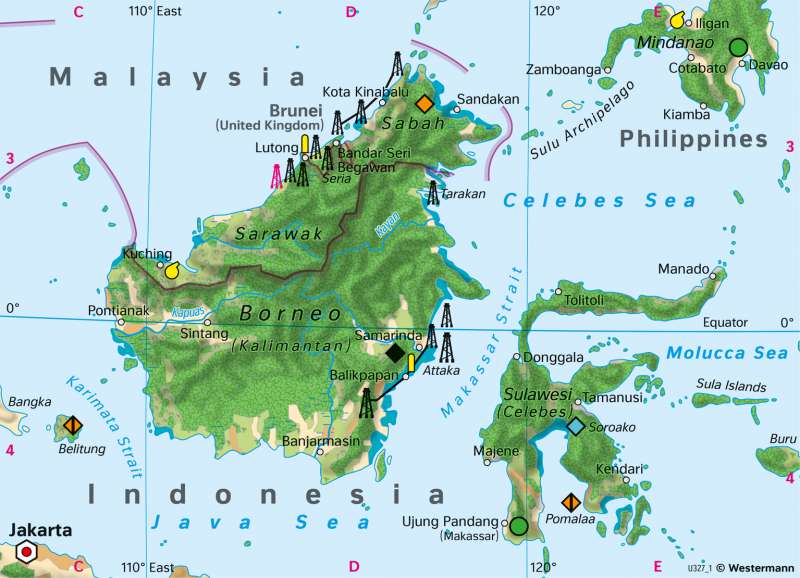Borneo - Economy and land use 1980
Economy and changes in land use
978-3-14-100890-6 | Page 137 | Ill. 2

Overview
Borneo is divided between the three states of Indonesia, Malaysia, and Brunei. The main mineral resources extracted in 1980 include oil, coal, natural gas, and copper. While Brunei's economy was based on the significant petroleum deposits, tropical timber became an important trade commodity for Malaysian and Indonesian Borneo. The generous granting of logging concessions for the timber industry began in the 1970s. The strong demand for cheap tropical timber on the world market offered both countries the opportunity to obtain urgently needed foreign currency. In 1980, however, economic exploitation was still strongly limited to the coastal regions, while most of the interior remained comparatively untouched.
Palm oil plantations
From the 1990s onwards, the boom in palm oil production became the main reason for extensive deforestation. In 1980, there were no oil palms on Borneo, only a handful of coconut palm plantations. In the meantime, the plantation areas have been massively expanded, especially in the south and west. Indonesia and Malaysia together now cover more than 80% of the world's palm oil production. The numbers are still increasing continuously. Although there are still closed forest areas on Borneo, very massive changes can be seen, similar to those on Sulawesi, Sumatra, in the Philippines or in Thailand. Today, remnants of contiguous primary forests exist almost exclusively in inaccessible areas. Thailand and the Philippines, once densely forested, now even have to import timber.




